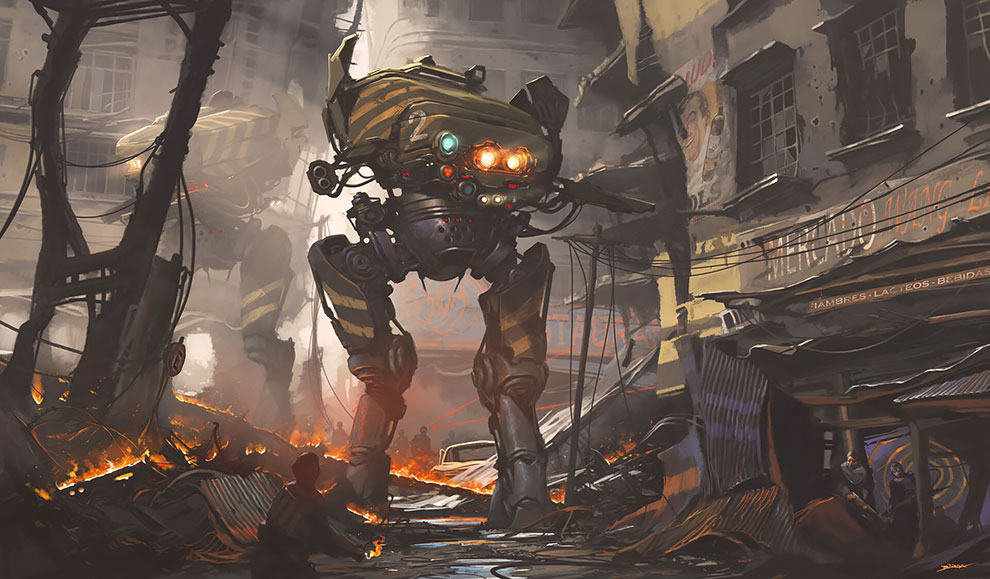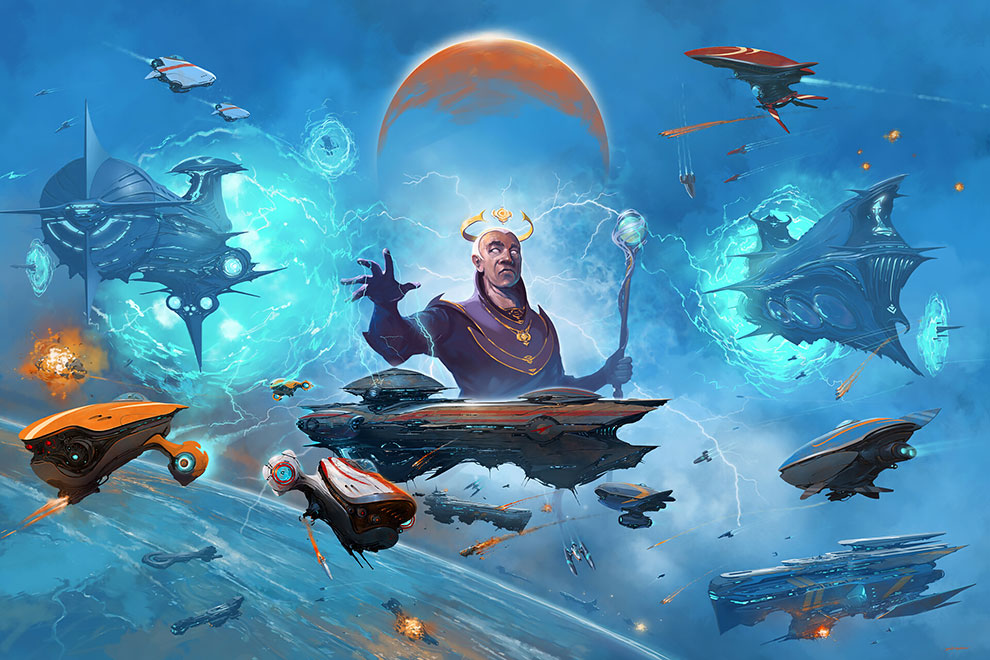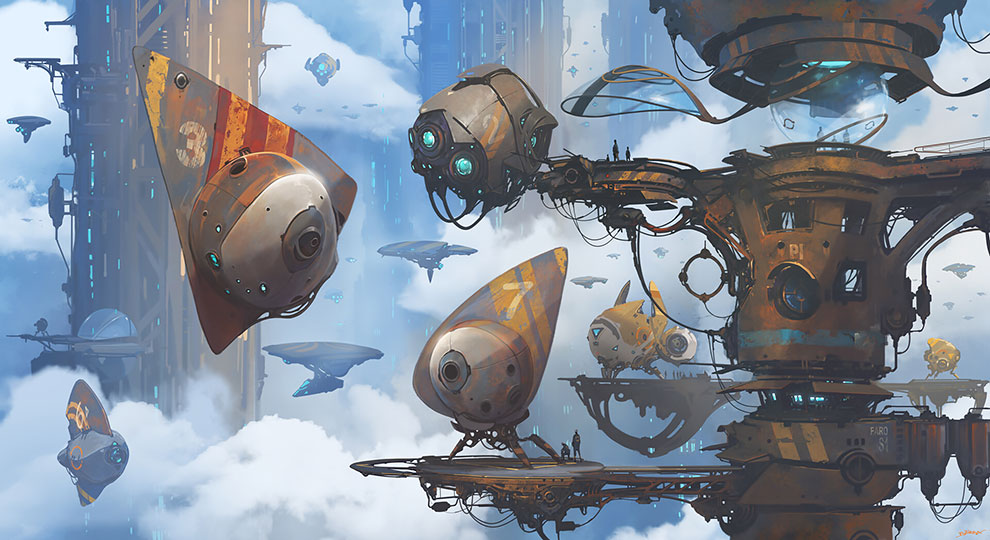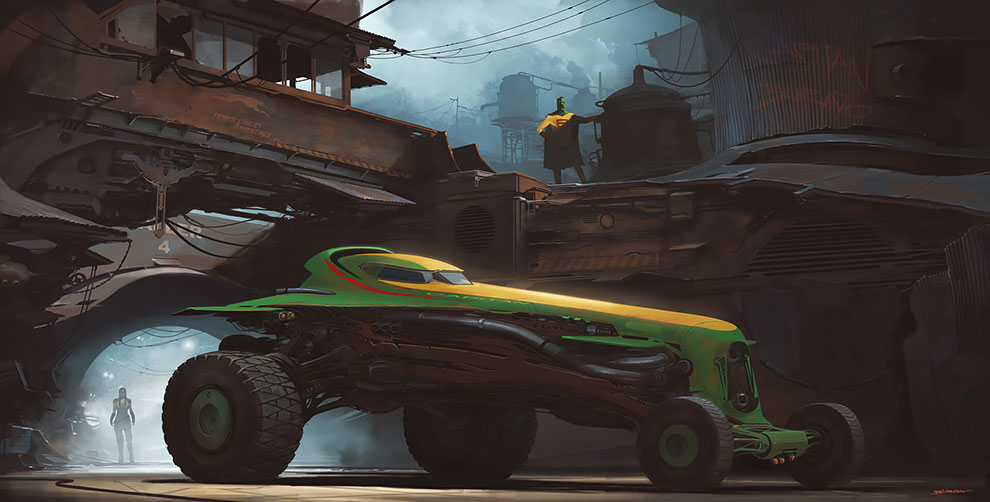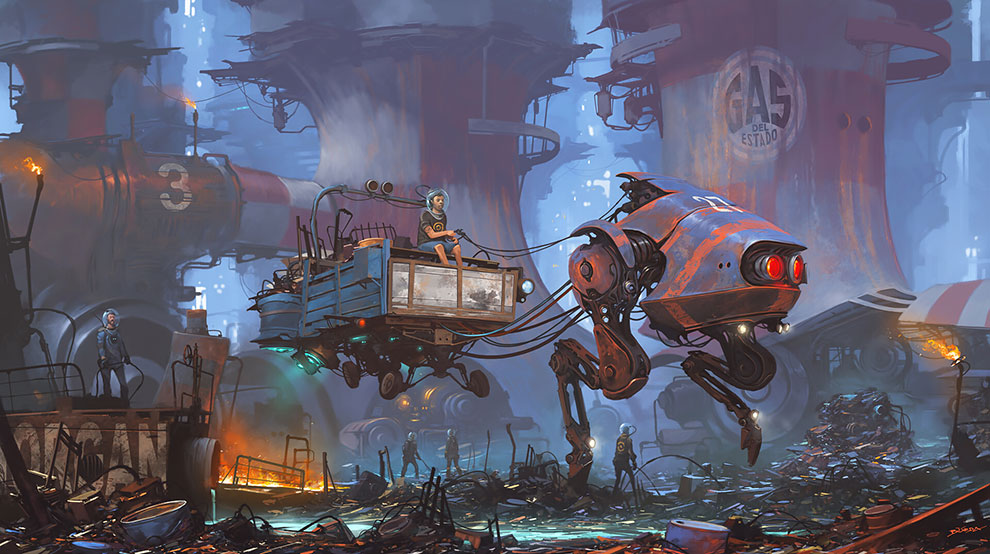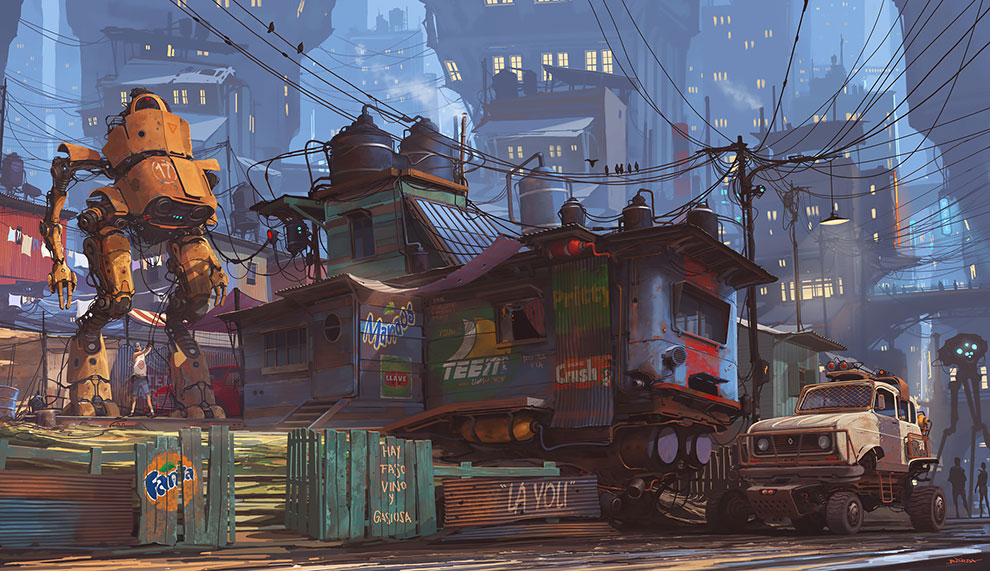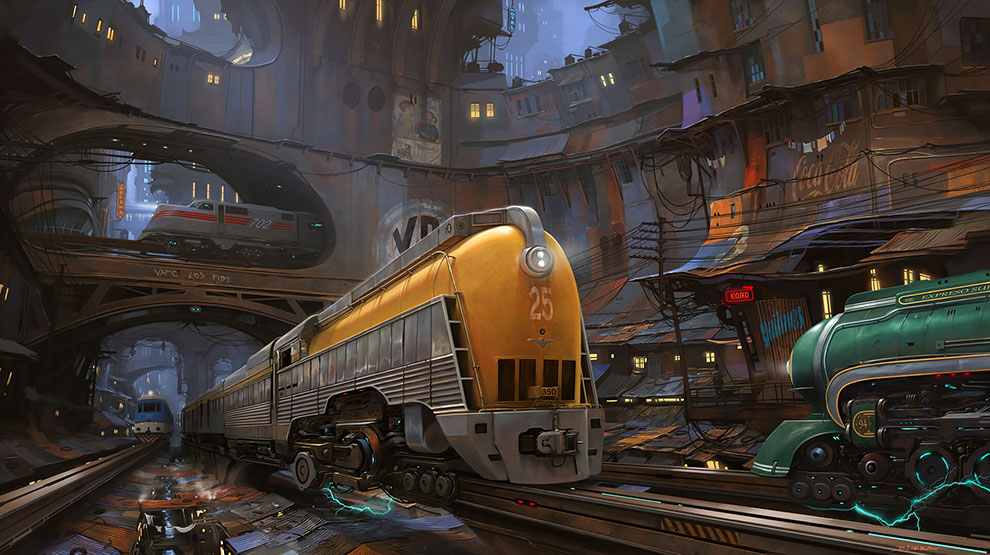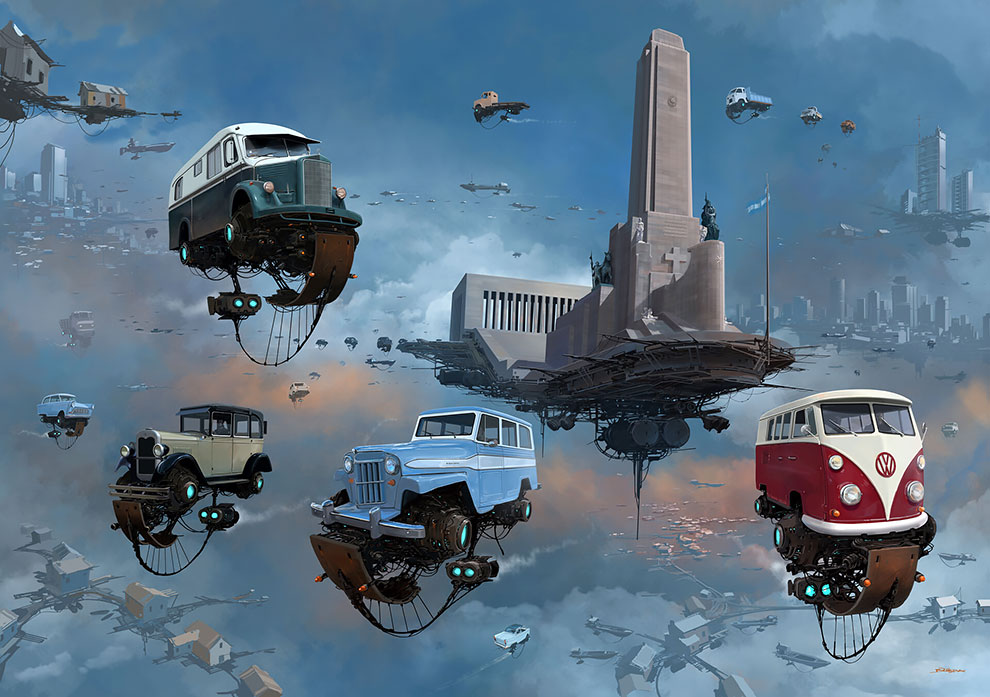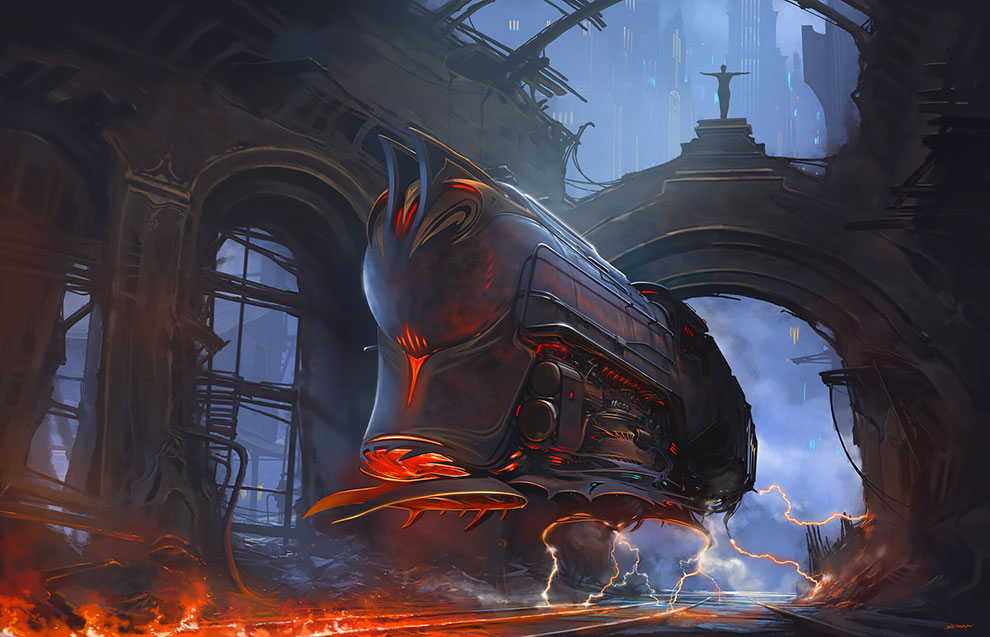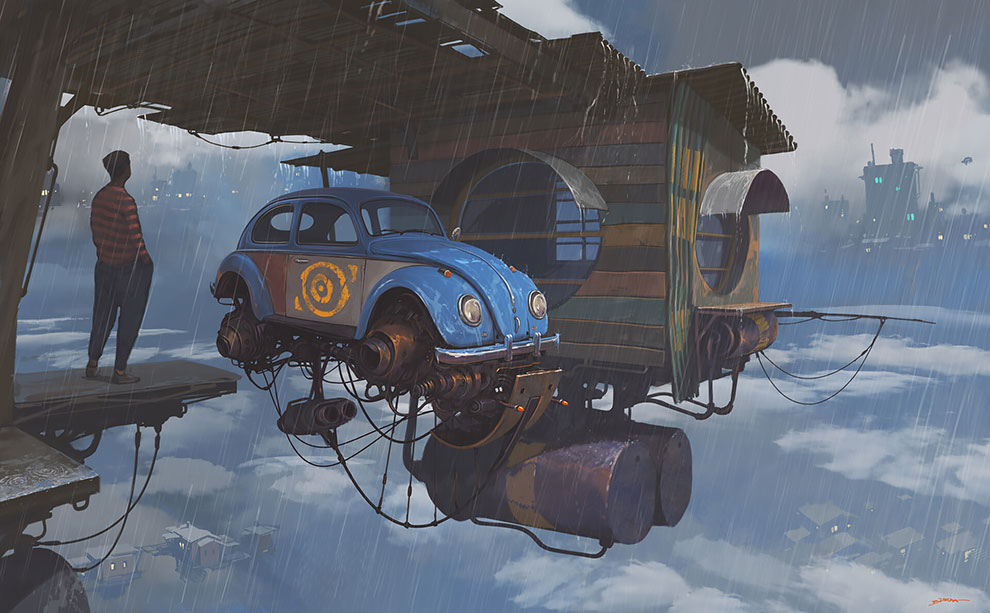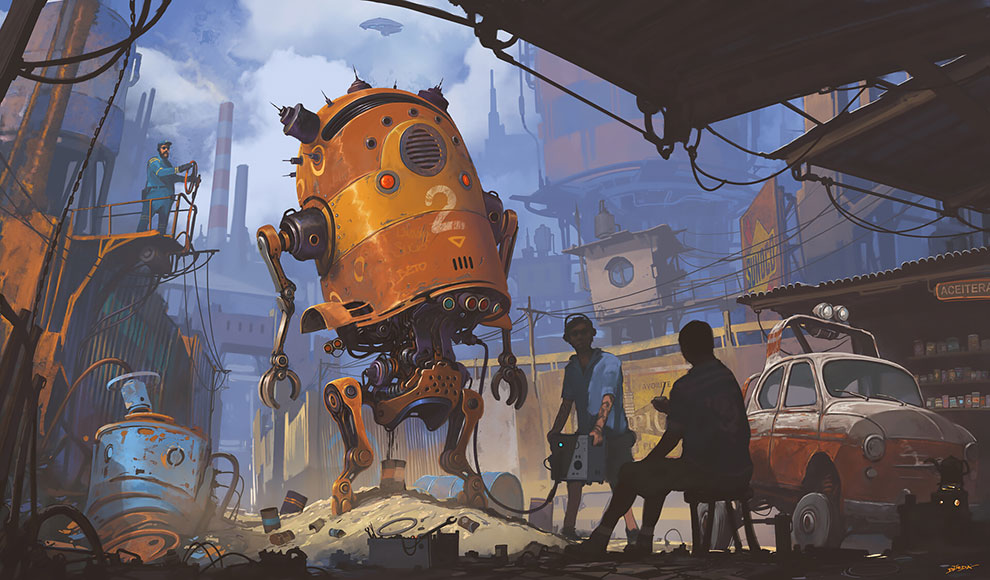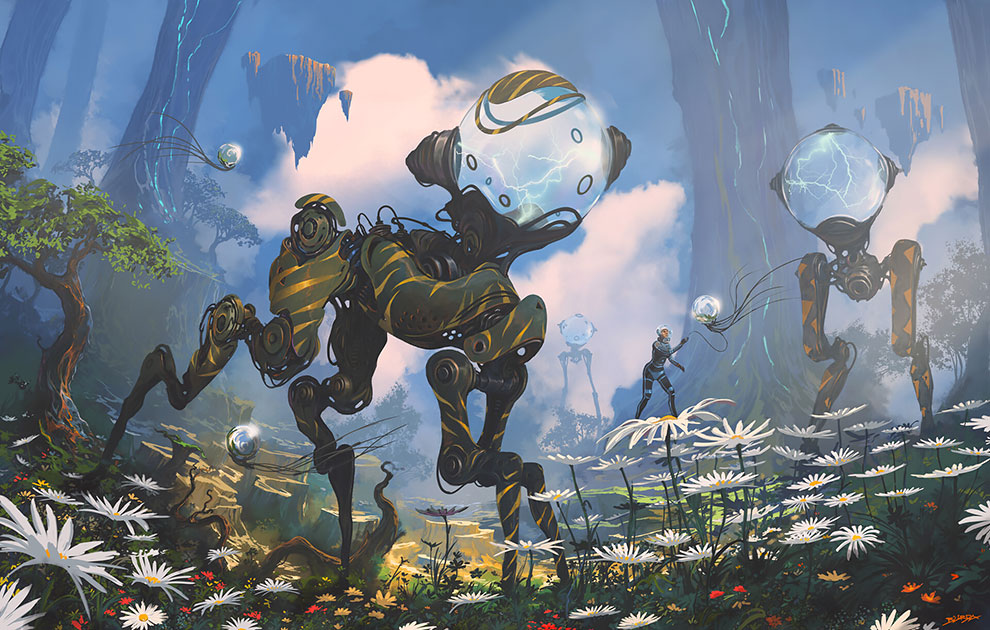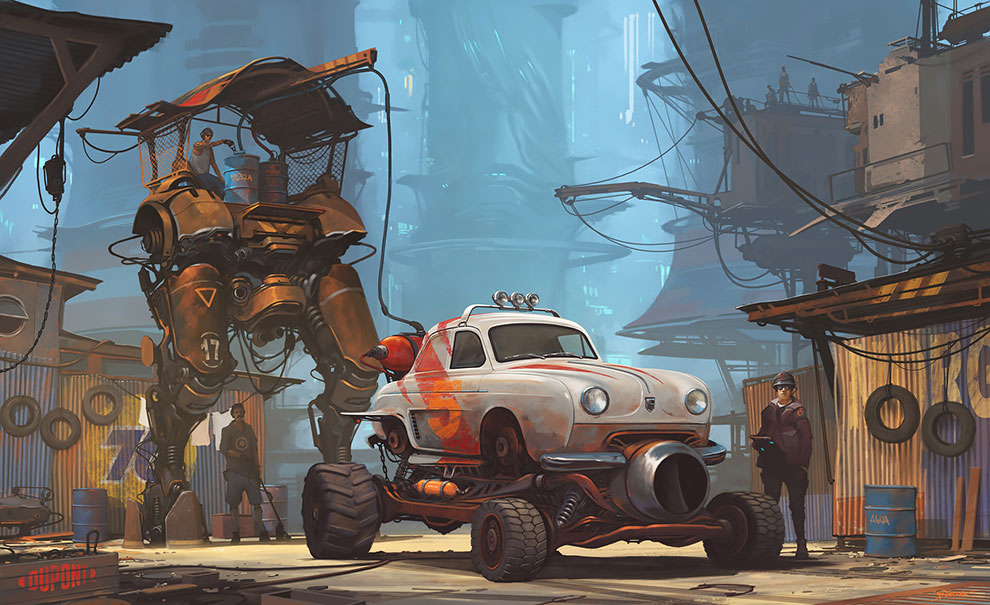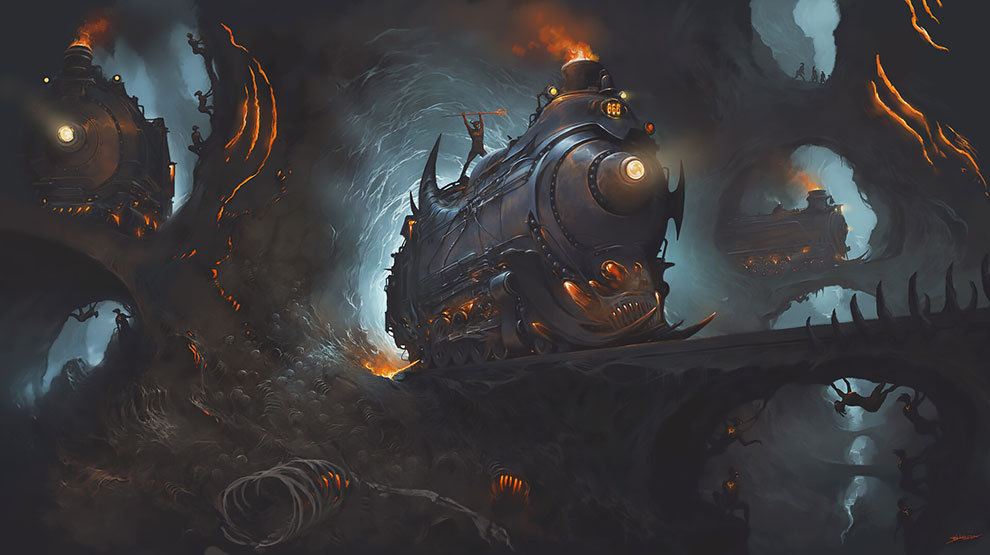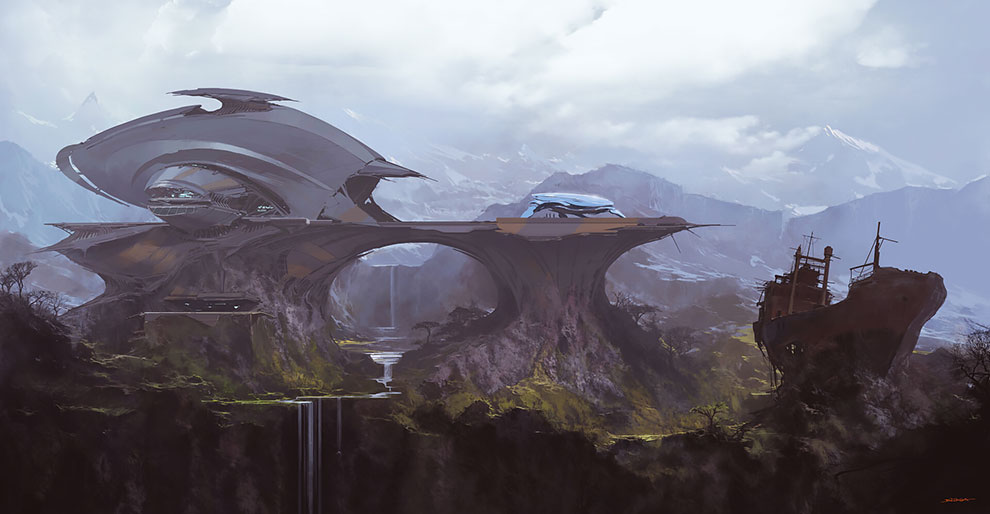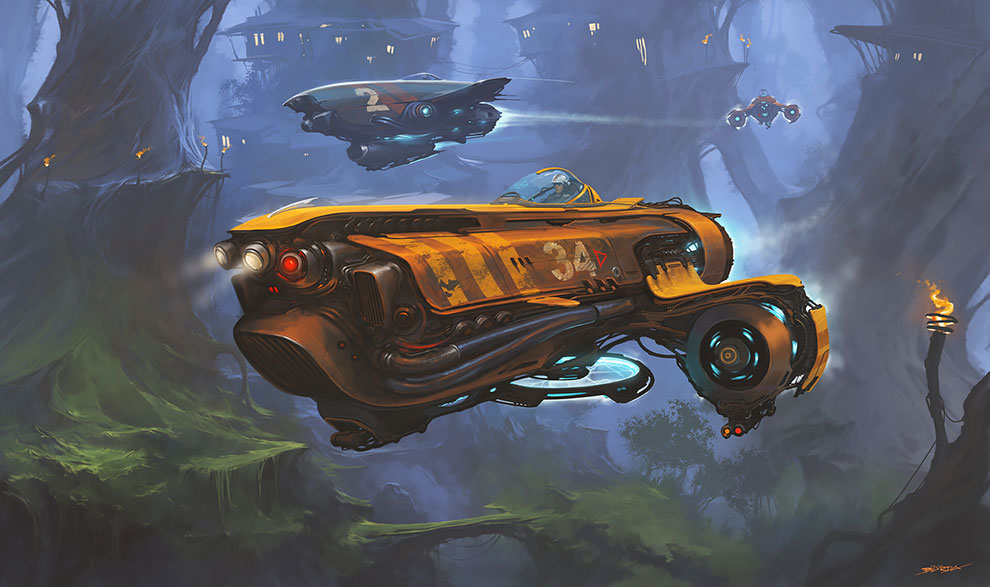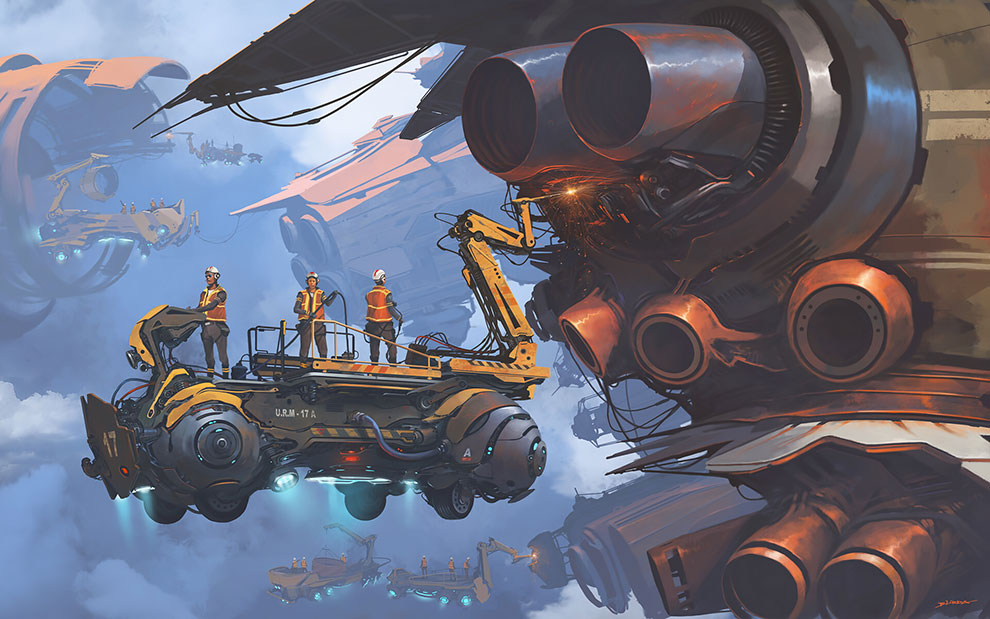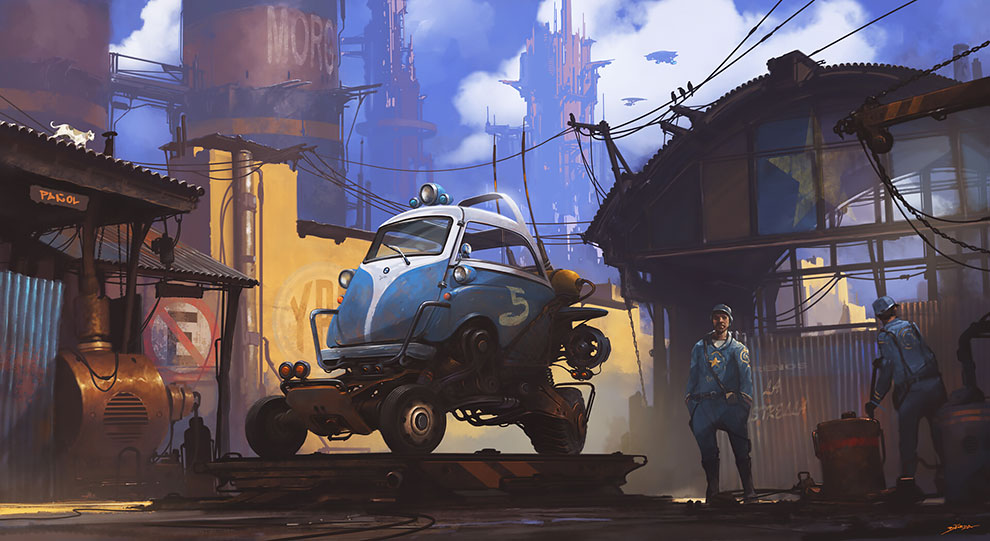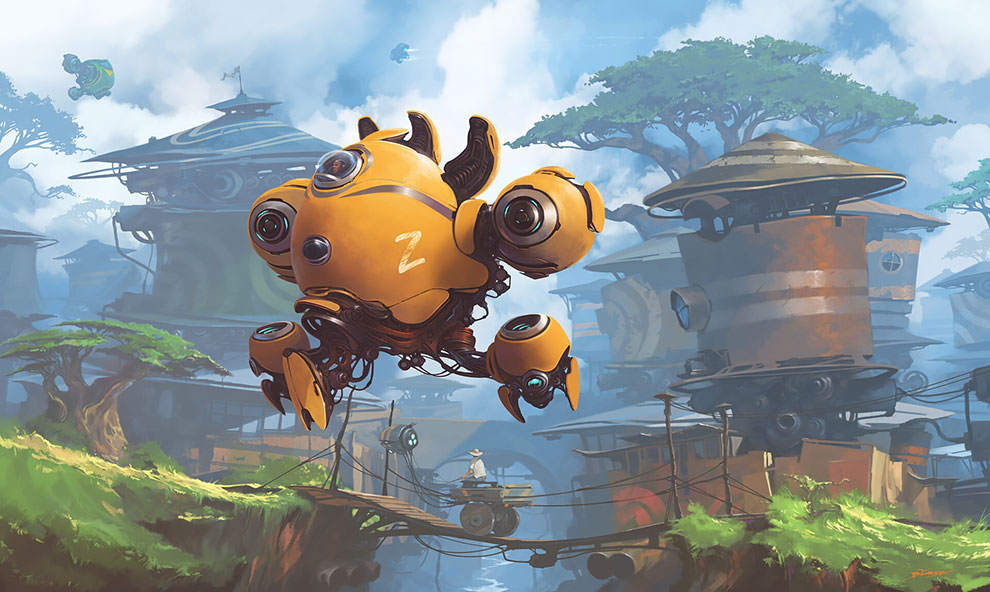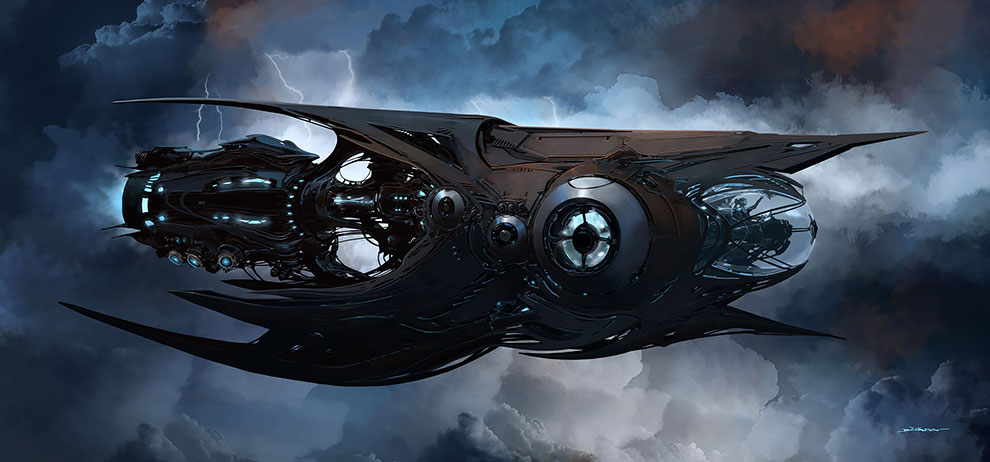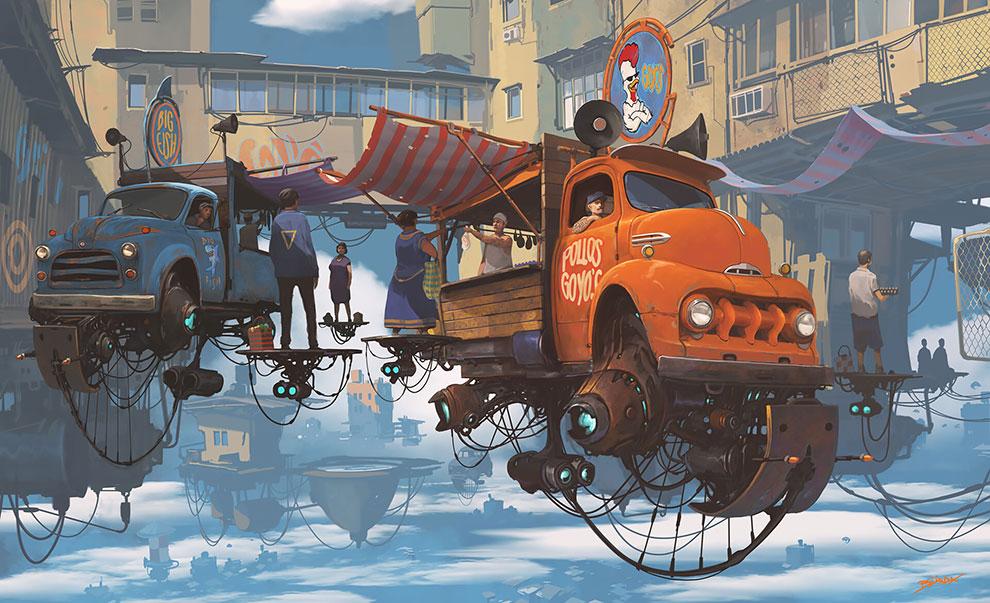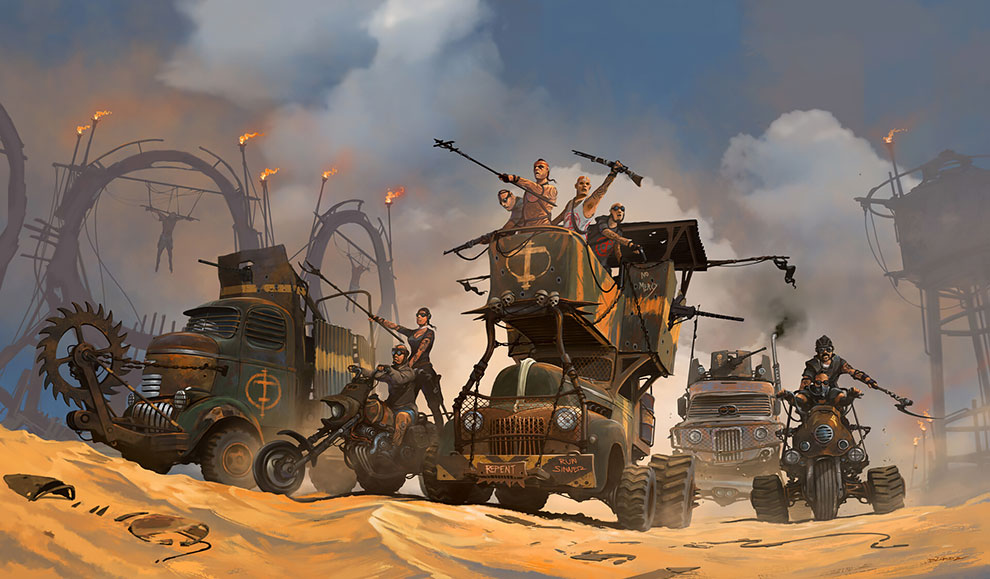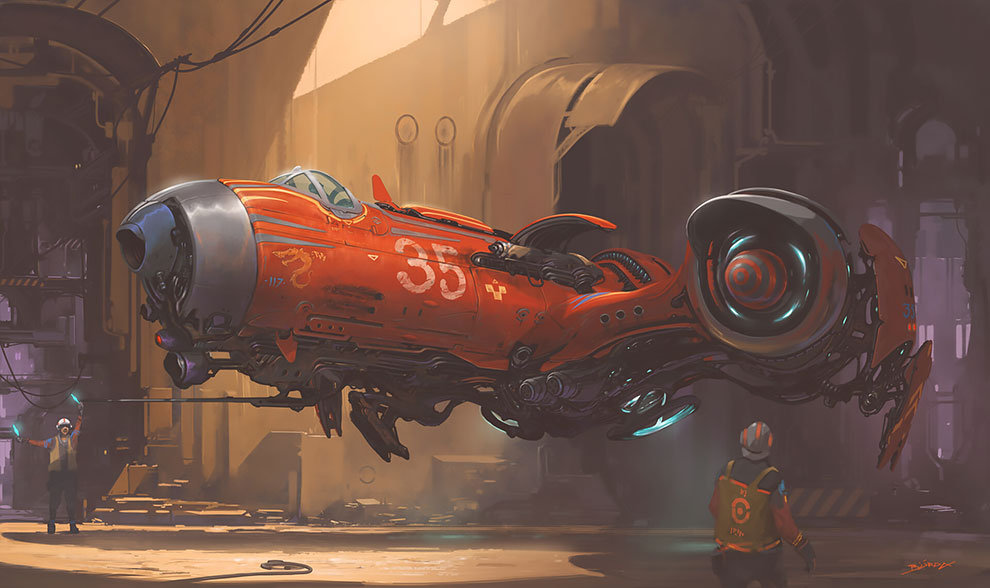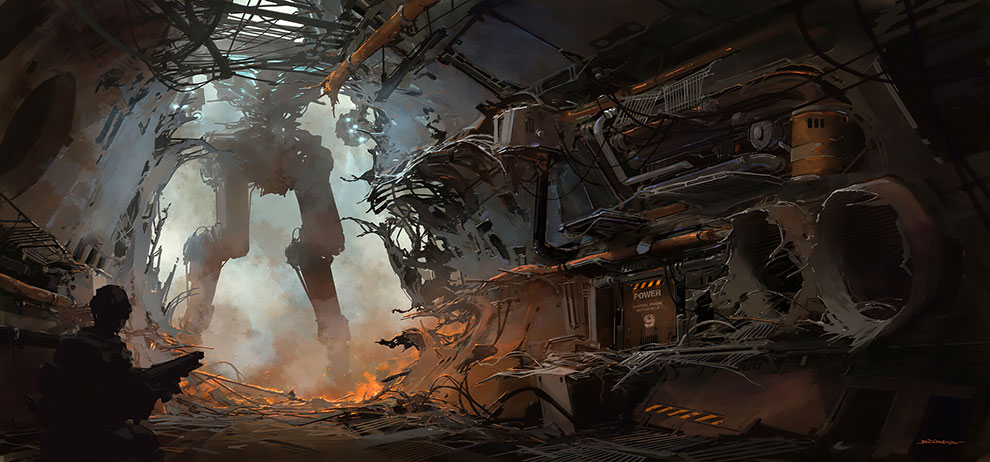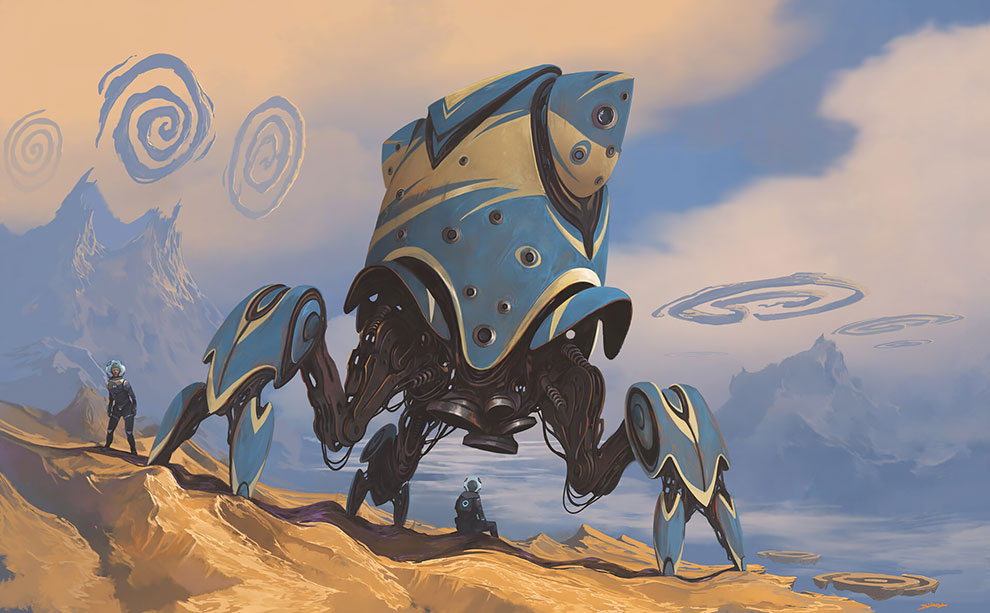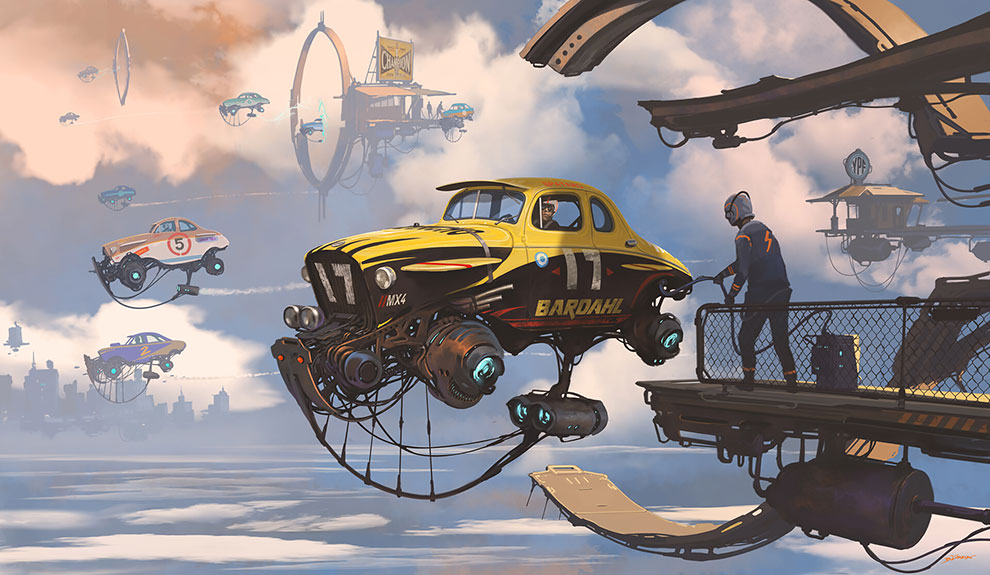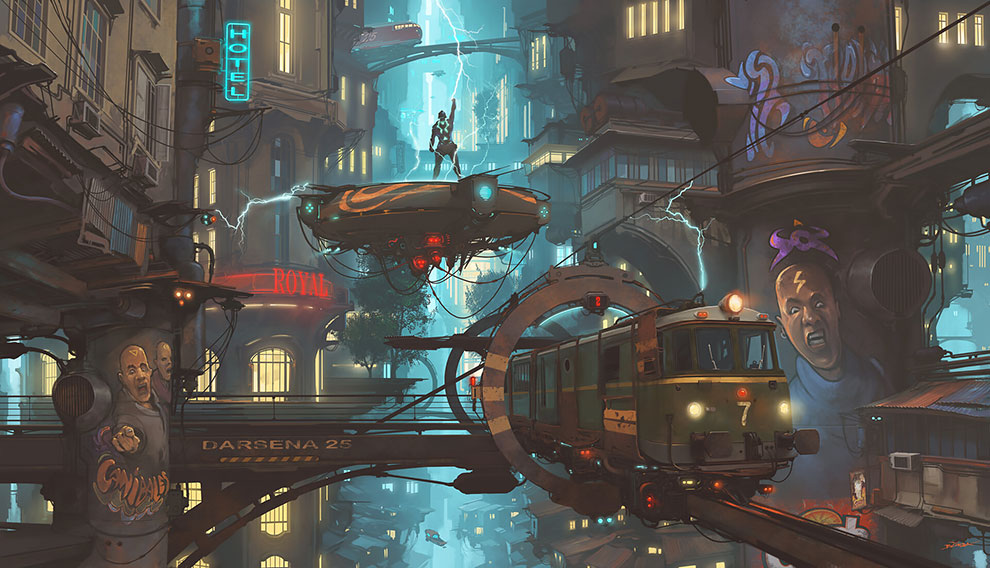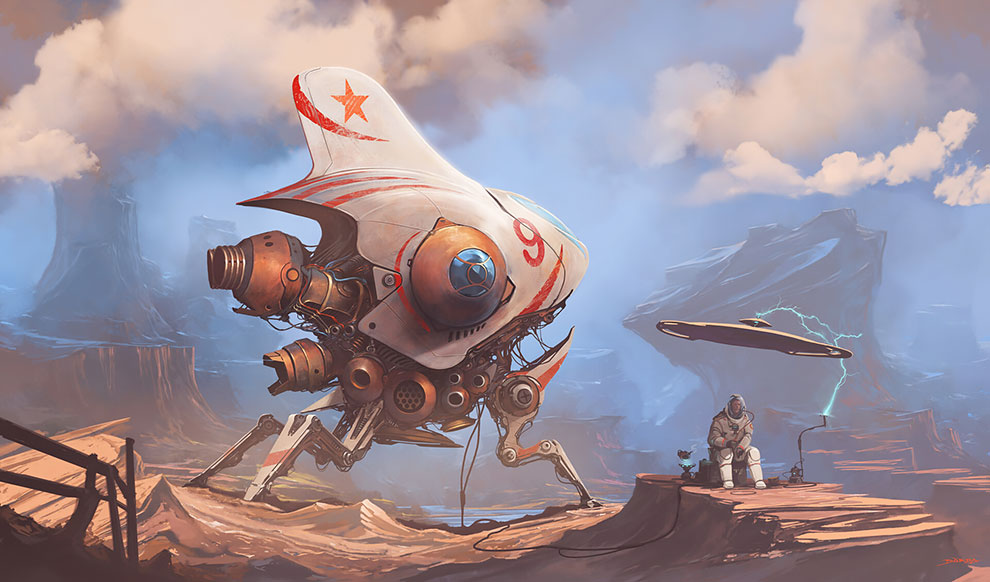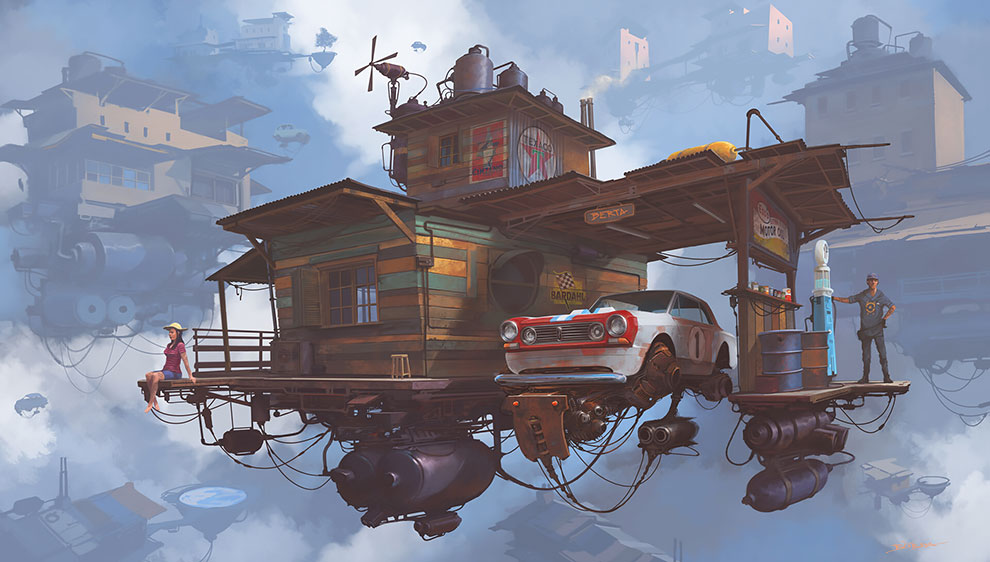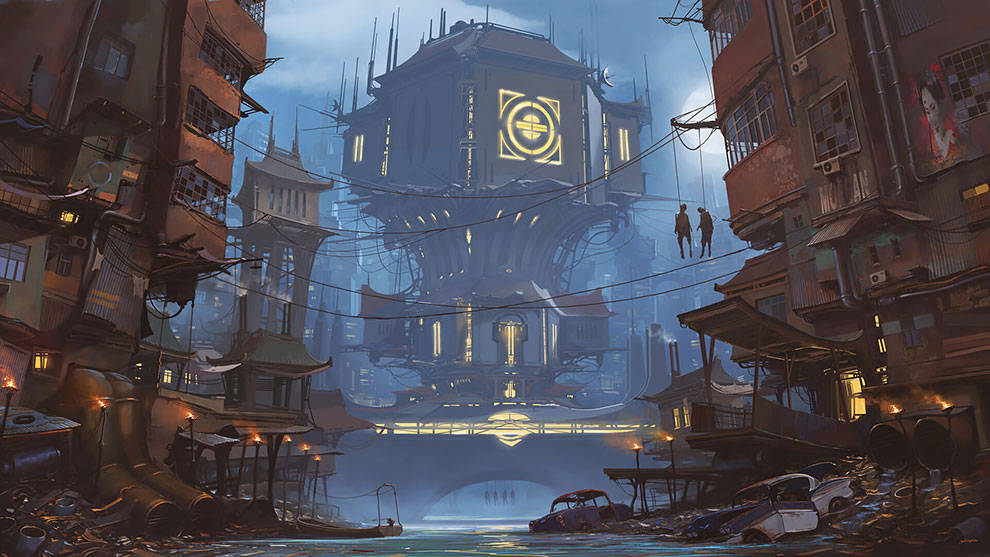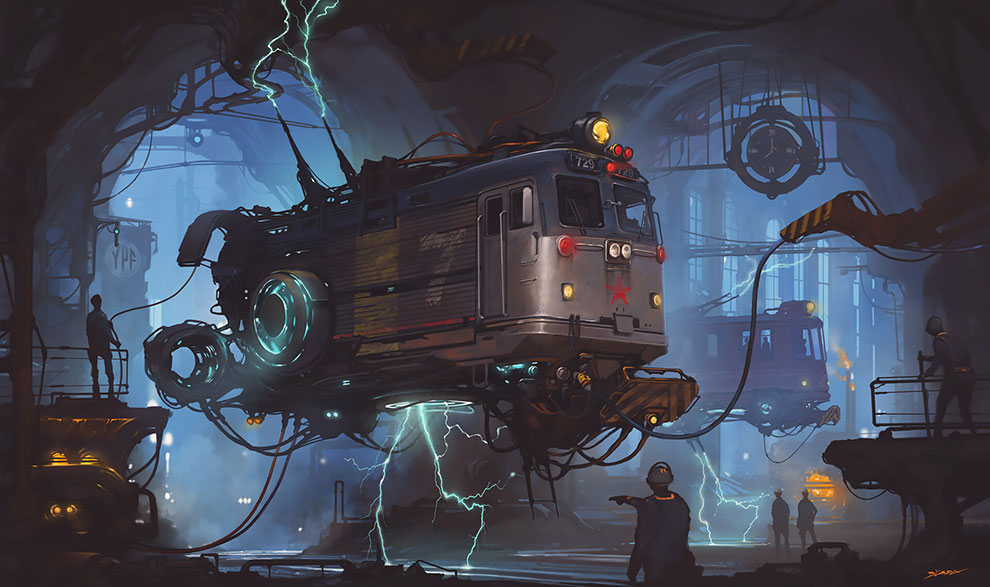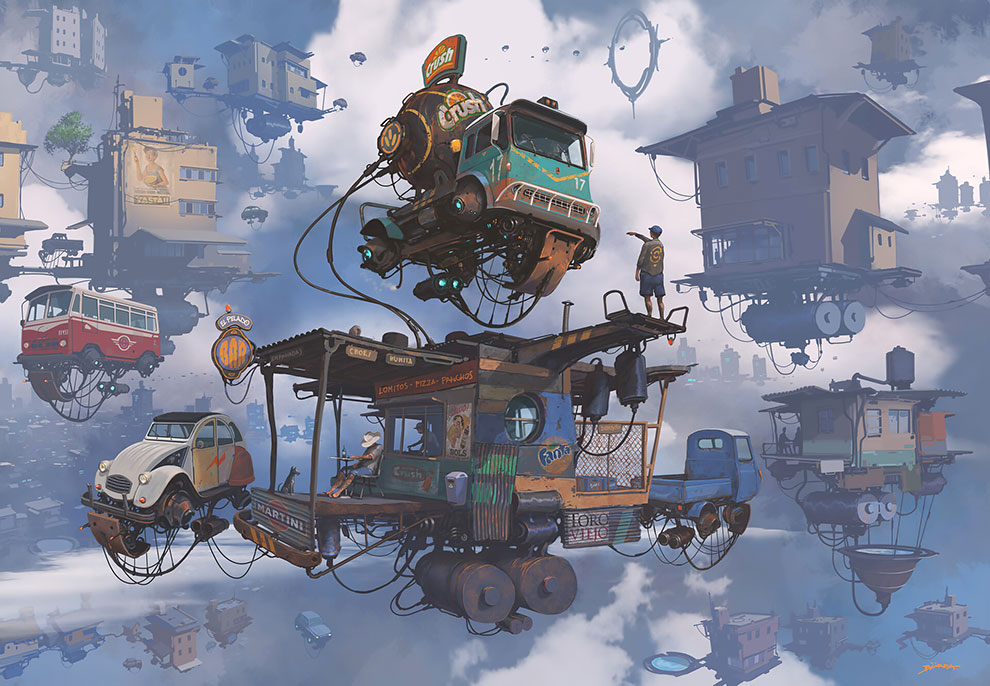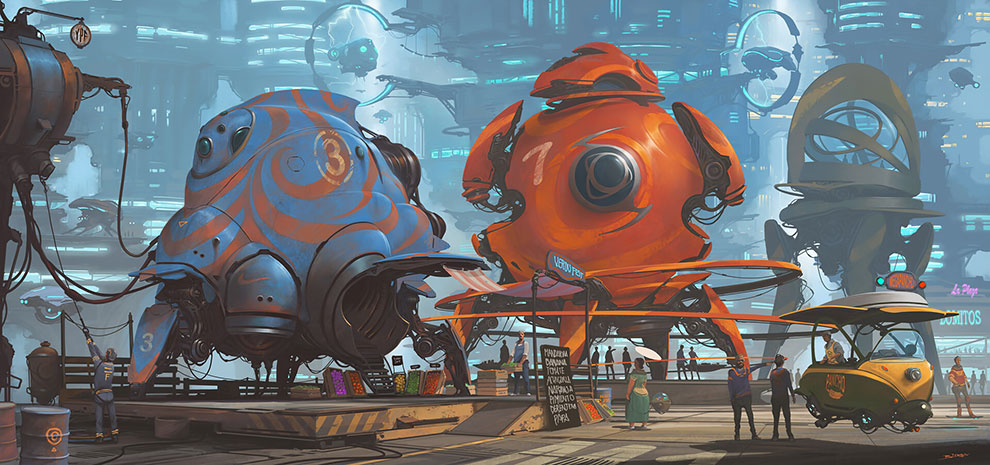Universo Chatarra: The Scrap Universe of Alejandro Burdisio
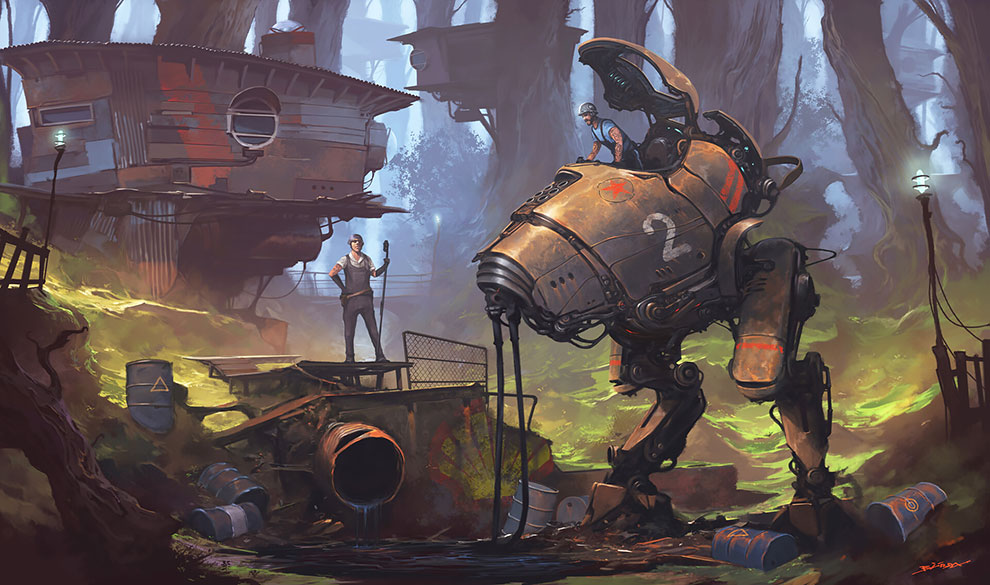
Argentinian artist Alejandro Burdisio (previously) presents us with a melancholy future that does not forget the past. After studying architecture and sharpening his pencils as a draftsman, Burdisio has made a career for himself as a concept artist.
In his free time, Burdisio creates a digital illustration world with heavy political undertones, defined by the architectural and automotive iconography of a particular period in Argentinian history—what he calls Universo Chatarra.
More: Artstation, Instagram
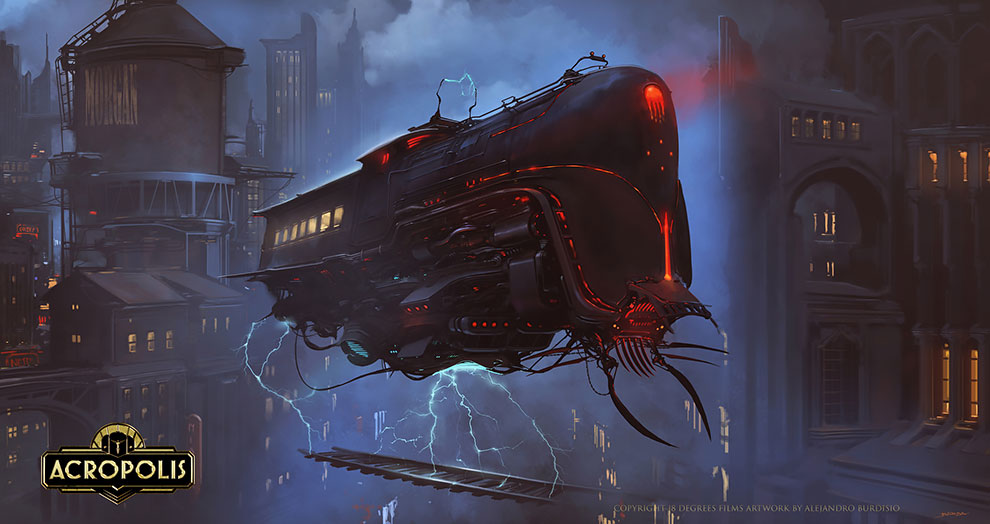
“I’ve been drawing since forever. I’m an only child and remember that when I was five or six my mom used to take me with her whenever she had to run errands, so I always found a corner to sit and draw in my little sketchbook until she was done. I drew all the time, although I went through a typical teenage “rebellious” period in which I didn’t touch a pencil. When it comes to drawing, my formal education started right after I served in the army; I started taking painting classes and enrolled in a graphic design course. I had to choose between that path and architecture. I chose architecture. That’s when I truly started learning about perspective, to understand space, to acknowledge my surroundings and to “read” the city.
I began to fine tune my observational skills, to collect details and look upwards, where I really could appreciate the city as a whole. When most people walk, their vision is limited to the horizon line; they seldom look up. Up there I find details like statues carrying the weight of the facades, gargoyles, domes, etc. All of this contributes to the content that informs my illustration work. It’s wonderful to be able to appreciate history as told by an old building. You just have to look up,” he told Visualounge.
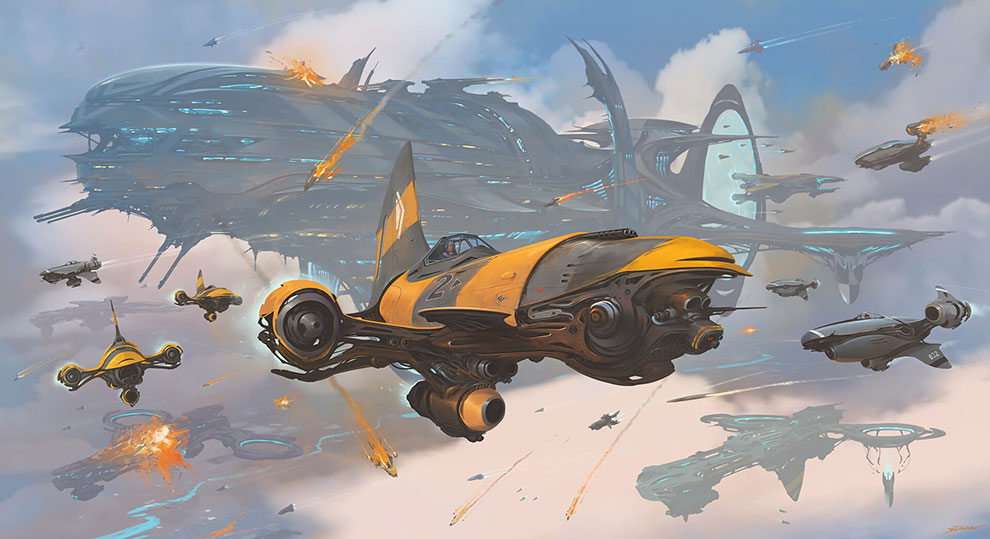
“There’s always an emotional or sociopolitical load. Many people think I’m a staunch Peronist, because I use plenty of Peronist political vocabulary, but that’s simply because that’s the only party that shaped the urban landscape—as it had its own architectural style. I don’t identify with any specific political party.
I don’t have an optimistic view of what technology can do for us, as human behavior leaves much to be desired. I include a lot of corrugated roofing in my work, which is a symbol of poverty all over Latin America. Many folks from countries like Pakistan, India, and Turkey empathize with my illustrations; they certainly understand the meaning of corrugated roofing, perhaps because poverty is more explicit in the developing world. An American may see those roof panels as quaint or colorful, but I believe they may not read it as a symbol.”
